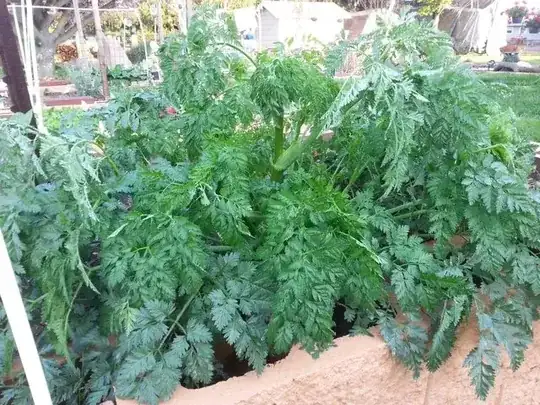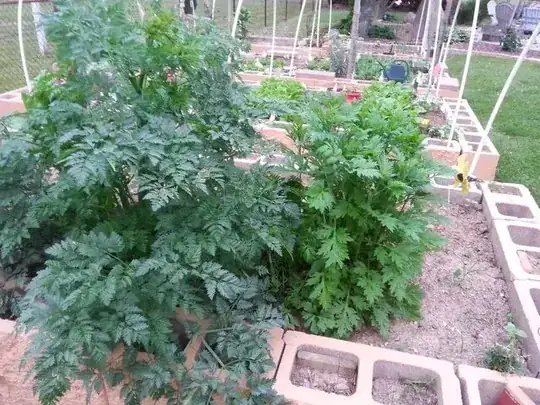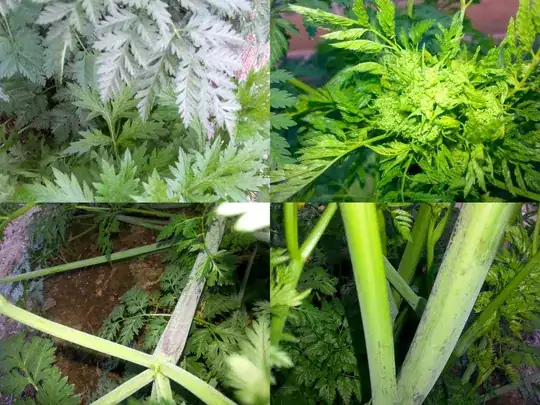Do the leaves for the one on the right smell like crysanthemums when they are crushed? If so, this is probably Feverfew - Crysanthemum parthenium . When it blooms, if you haven't already removed it, post another picture and we can confirm. Feverfew has groups of small white flowers. It is benign (except it can spread where it is "happy") often perennial, and some folks use it for medicinal purposes.
The plant on the left is definitely an umbellifera - that is, it is a plant in the carrot and parsley family. You can tell by the leaves, and the way they join to the stem, by clasping around it and forming a sort of swollen node. It looks to be close to blooming, too - the main stem's internodes are beginning to lengthen into a blooming stalk. The problem here is, members of this family can be very difficult to tell from one another, even for experienced gardeners and outdoors folk, but I agree this is NOT parsley. My concern is it may be hemlock, which is poisonous, and also an invasive weed. Here is a picture and an identification page for poison hemlock. Have a look and see if you agree it looks similar. If you do agree, I'd definitely get rid of it now, before it blooms, and dispose of it in a way that pets, livestock and kids can't get to it.
Giant Hogweed has much broader leaves, so I don't believe that is the correct ID. If you ever do find any, btw, you may need to call the county to come pull it for you, as contact with any part of the plant's juices causes SEVERE dermatitis and, if you accidentally rub any in your eyes, blindness.


